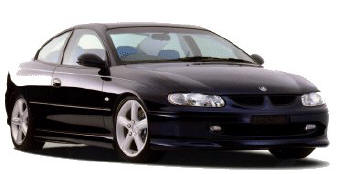|
If you own an older motor
vehicle, replace standard door lock buttons with tapered ones. These
replacements are inexpensive and much more difficult to pry up.
|
|
Do not
leave your motor vehicle registration, insurance policies, credit cards or
other important papers in a vehicleís glove compartment.
|
|
If you use a self-service
gasoline station or convenience store, do not leave
the keys in the vehicle when you go inside to pay your bill.
|
|
Do not place a
mini-replica of a license plate or personal identification on your
vehicleís key ring. |
|
Consider installing safety
security film on the windows (tint). With the film added to the glass, the
window will be 300% to 400% stronger. Intruders must cut their way through
the glass, thus taking more time. The safety film is clear and reflects up
to 98% of the sunís ultraviolet rays. |
|
Never hide a
second set of keys in your vehicle. Extra keys can easily be found. Store
a spare key in your wallet. |
|
Avoid parking next to vans,
pickups, and other large vehicles. These large vehicles can "hide" your
vehicle and make it more difficult for others to observe.
|
|
When you park along a curb,
angle the front wheels sharply to the left or right, making it difficult
for the thief to tow it away. Wheels should also be turned to the side in
driveways and parking lots. |
|
If your vehicle is rear-wheel drive, back into your driveway. Rear wheels
lock on four-wheel drive vehicles, making them difficult to tow.
Front-wheel drive vehicles should be parked front end first. |
|
Please, periodically check your
license plates to make sure they havenít been stolen, switched or altered.
|
|
Join Operation
Identification and engrave your driverís license number or social
security number in several concealed places on, or in your motor vehicle.
Drop a business card into the window channel, beneath the seat or behind
the dash panel. |
|
Engrave your batteries, wheel
covers and car stereos with either your drivers license number or social
security number preceded by your stateís initials. |
|
Donít invite a vehicle
break-in by leaving packages or valuables (radar detectors, cellular
phones, compact disc players, etc.) in sight. Take valuables with you,
put them under the seat or lock them in the trunk. |
|
Park in well lighted
and busy areas. |
|
Park in an attended
lot. Motor vehicle thieves do not like witnesses and prefer unattended
parking lots. |
|
When parking in an
attended lot, leave only the ignition/door key. If your trunk and glovebox
use the same key as the door, have one of them changed. Leaving the
ignition key with the
attendant, retain all others and be sure the key number does not appear on
the key that is left. |
|
On cold mornings, never leave
your motor vehicle running while it is unattended, in order to warm up.
|
|
For each vehicle you own or lease, record the following information
and keep it in a safe location (not in the vehicle: |
| |
- Make and Model |
| |
- Model Year |
| |
-
Registration Number (Plate) |
| |
- Vehicle
Identification Number (VIN) |
| |
- Color |
| |
- Name of
Insurance Company and Agent |
| |
- Engine
Size |
| |
- Any
Peculiarities of Vehicle (dents, pin stripes, etc.) |
| |
- Key
Number |
| |
|
Avoid transferring items to the
trunk of a vehicle in the parking lot. A thief may be watching.
Checkbooks, credit cards or other credentials which a thief could misuse
should not be left in a motor vehicle. |
|
Park as close as possible to an
open business. |
|
Lock your garage door. Also lock your vehicle doors, even
when itís in the garage. |
|
When you are out of town and leaving your motor vehicle, remove the
electronic ignition fuse, rotor distributor or the coil wire to prevent
motor vehicle theft. |
|
If you see a disabled motor
vehicle, instead of stopping to help, drive to a nearby telephone and
inform the police of the vehicleís location. |
|
If your vehicle becomes
disabled, attach a white handkerchief to the door handle or window,
lock the doors and stay inside the vehicle. If someone stops to
help, do not open your door or window. Ask the person to please go to a
telephone and call for help. |
|
Use metal cane type steering
wheel locks. The metal cane hooks around the brake pedal on one end, and
around the steering wheel rim or spoke on the other. The device is drawn
tight and locked with a key. |
|
Use a temporary snap lock which
fits over the bulge in the steering column of late-model American cars,
where the ignition switch is, and prevent the ignition from being turned
on. |
|
Do not disconnect
the buzzer that warns of keys left in the ignition. Itís for your
protection. |
|
Use a locking gas cap,
not only to prevent theft of gasoline, but to limit a thief to the amount
of driving he can do on one tank. |
|
There are special locks made for
various marketable parts of cars. Battery locks or wheel cover locks may
save these items. |
|
If your vehicle is not already
equipped with one, install an interior hood release.
|
|
Install different locks for the
door, ignition and trunk. A thief who might obtain your vehicleís door key
still wonít have the ignition key. |
